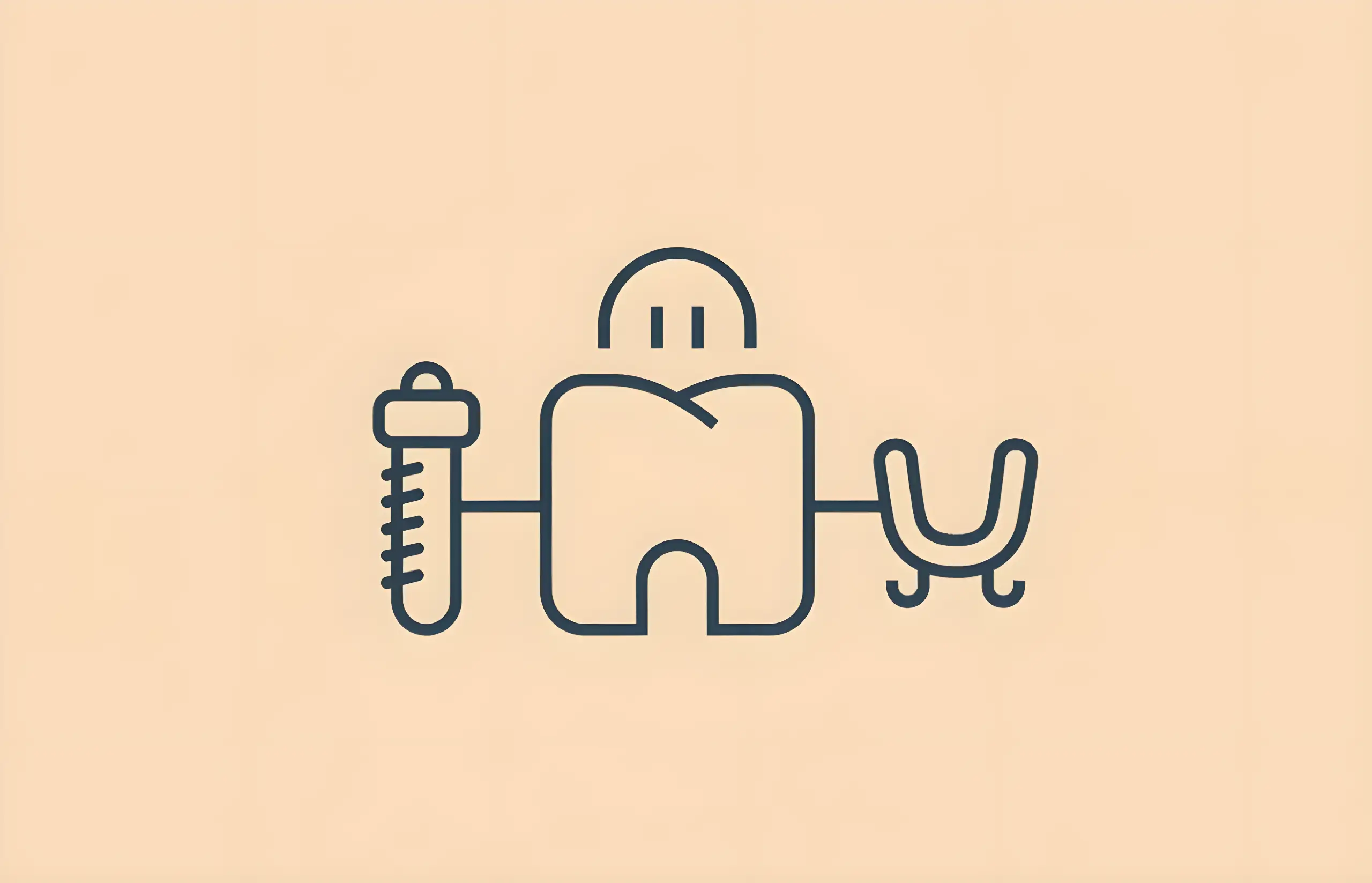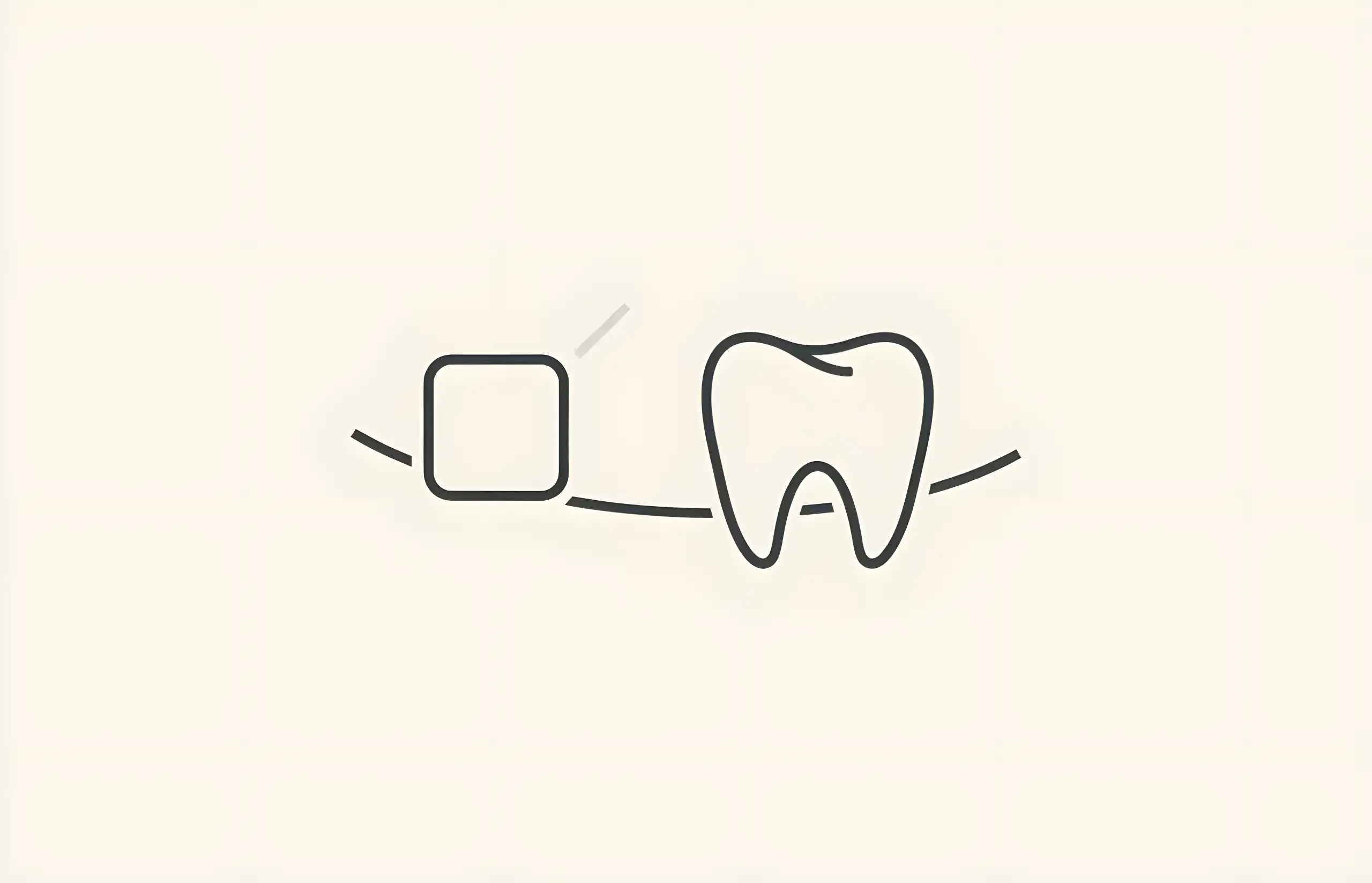Missing one or several teeth may prove disastrous and can seriously affect your appearance and the functionality of your smile or bite.
Missing teeth can cause other related health issues, such as teeth shifting, speech impediments, temporomandibular joint disorder (shortened as TMJ), malocclusion and an increased risk to develop periodontal disease or tooth decay.
Thankfully, with the advent of modern dental bridges, having a wonderful, white sparkling smile is not reserved only for the celebrities, as it once was. Dental health technology has evolved tremendously and now every patient can have a professional bridge installed, allowing them to regain their confidence and flash a fabulous glowing grin for any photo opportunity.
Research analyzing over 80,000 adult patients shows that conventional bridge abutments have 72% survival at 10 years, comparable to dental crowns. With proper care and material selection, bridges can provide effective tooth replacement for many years.
What is a Dental Bridge?
Essentially, bridges are small, partial dentures (or prosthetics) that are used to replace one or more missing teeth. There are several types available and their use depends on the location of the missing teeth, the mouth anatomy and other factors, determined by your dentist.
They are made up of two or more crowns (depending on the number of missing teeth) that cover the teeth on both sides of the gap. They are known as anchor or abutment teeth, and the false teeth, named pontics, lie between them. The pontics (the false teeth) can be made of porcelain, metal alloys, gold or a combination of these different materials.
Research shows significant differences in survival rates by material: metal-ceramic bridges demonstrate 94.4% survival at 5 years compared to 88.6% for all-ceramic versions. Metal-ceramic reconstructions show superior longevity with only 1.6% framework fracture rates versus 6.5% for all-ceramic prostheses.
When it comes to the structural support for the false teeth, there are two options, depending on the mouth anatomy: natural teeth (if they are healthy) or dental implants.
Benefits of Dental Bridges
When done properly they have profound effects on the appearance of the patient and help:
- Restore the smile and facial aesthetics
- Restore the ability to speak properly
- Restore the ability to chew effectively
- Prevent the shifting of remaining teeth
- Maintain the normal shape of the face
- Distribute bite forces evenly
Research indicates bridges achieve approximately 90% survival at 5 years and 80% at 10 years, with complications occurring at low rates of 1-2 per 100-year timeframe.
The Dental Bridge Procedure – How Are They Installed?
When getting a bridge installed, there are several steps to know about. The procedure typically requires 2-3 dental visits over 2-4 weeks.
First Visit: Preparation and Impressions
Firstly, your dentist will prepare the abutment teeth, using specialized tools to taper and remove a layer of enamel, which will allow room for the new denture. This preparation is essential to ensure proper fit and alignment.
During the next step, the dentist will make impressions of your healthy teeth as models for the new false teeth. This step ensures that your bite will be ideal and natural, effectively the same as when you had your normal teeth. The bridge, pontics and crowns are all made based on the model taken during this step.
Temporary Bridge Placement
During the third step, your dentist will install a temporary bridge that will act as protection for your gums and prepared teeth until the permanent bridge is completed. This temporary prosthesis typically costs £50-£100 and allows you to maintain function while the laboratory fabricates your custom bridge.
Laboratory Fabrication
When preparing a bridge for multiple teeth, the existing teeth must be tapered simultaneously to be able to fit the new denture. The tapered teeth must match perfectly with the new prosthetic teeth, ensuring an ideal, sealed seat for the bridge.
Final Bridge Placement
Once the permanent bridge is ready (typically 2-3 weeks), you'll return for the final placement. The dentist will remove the temporary bridge, check the fit of the permanent bridge, make any necessary adjustments, and cement it permanently in place.
When a perfect alignment is not possible initially, an attachment that can be cemented first must be used. The other abutment tooth is then inserted, with the arm of the pontic tooth slipping into an opening in the cement. This procedure allows longer spans with little added effort.
Different Types of Dental Bridges
They come in a variety of shapes and can be made using various materials. They are always custom made, accordingly to the specific needs of every patient, but there are three major types available:
Traditional Bridges
They consist of a crown built on either side of a missing tooth and includes a pontic to fill the gap. They can be installed on a tapered tooth or on a metal implant. Being the most popular among bridges, they are made of simple materials, such as porcelain, other ceramics or metal.
Research analyzing over 7,000 bridge abutments shows conventional bridges achieve 72% survival at 10 years. Metal-ceramic traditional bridges demonstrate superior performance with 90.4% survival at 10 years and 80.5% at 15 years.
Traditional bridges are appropriate when you have healthy teeth on both sides of missing teeth, and are even strong enough for high-pressure locations near the back of your jaw. However, those abutment teeth need to be modified by removing enamel to make room to place the crowns, and because enamel never grows back, those abutment teeth will always need crowns to protect them.
Maryland Bonded Bridges
Also known as resin-bonded bridges, these dentures are made of plastics or porcelain fused to metal and are installed on a complex metal or porcelain framework. They consist of porcelain or metal wings that are attached on each side of the bridge.
Research shows Maryland bridges offer significant advantages for anterior teeth replacement. A comprehensive review analyzing 1,746 anterior resin-bonded prostheses found varying 5-year survival rates by material:
- Glass or ceramic: 100% survival
- Alumina: 93.3% survival
- Zirconia: 87.9% survival
- Metal-framed: 86.2% survival
- Fiber-reinforced composite: 81.7% survival
A Maryland bridge is referred to as a more conservative type of dental bridge because it does not require the removal of enamel from abutment teeth to make room for dental crowns. However, a resin-bonded bridge offers the advantage of not requiring any modification to the abutment teeth, but isn't appropriate for molars or other teeth exposed to high biting force. Maryland bridges are most commonly used in the front of your jaw.
Cantilever Bridges
When there is only a healthy tooth near a gap, a cantilever bridge may be required. Although these bridges are uncommon, they are effective for certain patients that have multiple gaps. Cantilever bridges are made of porcelain, metal alloys and sit on a metal framework.
A cantilever bridge can be used where there is only one abutment tooth beside a missing tooth. Research indicates that cantilever designs demonstrate 91.9% survival compared to 85.2% for two-retainer designs, though this difference was not statistically significant.
However, cantilever bridges will be weaker than two-crowned traditional dental bridges and should be used judiciously based on occlusal forces and patient factors.
How Much Does a Dental Bridge Cost?
Generally, bridges are considered some of the most affordable ways to replace missing teeth. The cost of a dental bridge from a professional dentist can vary vastly, depending on the patient's medical situation. Also, the prices can go up, depending on the technology and materials used.
In the United Kingdom, patients have two ways to get one made, and the prices vary accordingly:
NHS Treatment
For patients who rely on NHS dental care, bridge treatment falls under Band 3 treatment, which covers comprehensive dental work including bridges, crowns, dentures, and other complex procedures. NHS charges are set nationally and reviewed annually.
Private Treatment
Bridges can also be made and installed at private dental clinics. At these clinics, each service is paid separately:
Consultation and Diagnostics:
- Medical assessments: £30-£50
- Standard X-rays: £9-£30
- Panoramic X-rays: £30-£80
Preparatory Work:
- Tooth extractions (if needed): £50-£150 per tooth
- Root canal treatment (if needed): £200-£600
Bridge Costs by Type:
- Resin-bonded (Maryland) bridges: £400-£900
- Traditional porcelain-bonded bridges: £800-£1200
- Precious metal alloy bridges: £800-£1500
- Zirconia bridges: £1000-£2500
- Temporary bridge: £50-£100
Additional Services:
- Professional shade/color assessment by technician: £50-£100
The total cost depends on the number of teeth being replaced, materials selected, complexity of the case, and geographic location within the UK. Multi-tooth bridges will cost proportionally more as they require additional pontics and potentially more abutment teeth.
Cost-Effectiveness Considerations
Research comparing bridges to dental implants shows that while implants have higher upfront costs (£2000-£3000+ per implant), they offer superior long-term success rates of 95-98% over 40+ years compared to bridges' 72% 10-year survival. However, bridges remain an excellent choice for many patients due to lower initial investment and faster treatment timeline.
Longevity and Maintenance
A well-crafted bridge can bring back a wonderful smile, help you regain confidence and have a safe and comfortable bite, that will allow you to eat your favourite meal.
Expected Lifespan
Research demonstrates varying longevity based on bridge type and material:
- Metal-ceramic bridges: 90.4% survival at 10 years, 80.5% at 15 years
- All-ceramic bridges: 88.6% survival at 5 years
- Conventional bridges: 72% survival at 10 years
- Resin-bonded bridges: 86-100% survival at 5 years depending on material
With proper care and maintenance, bridges can last 10-20 years. Factors affecting lifespan include:
- Oral hygiene practices
- Regular dental check-ups
- Material selection
- Bridge span length (shorter spans last longer)
- Occlusal forces and bite alignment
- Presence of bruxism (teeth grinding)
- Periodontal health of abutment teeth
Maintenance Requirements
To maximize bridge longevity:
- Brush twice daily with fluoride toothpaste
- Floss daily using floss threaders or interdental brushes
- Use antimicrobial mouthwash to reduce bacterial buildup
- Attend regular dental check-ups and professional cleanings
- Avoid chewing hard foods or ice
- Wear a nightguard if you grind your teeth
- Address any signs of looseness or discomfort immediately
Bridges vs Dental Implants
When considering tooth replacement options, many patients wonder whether bridges or dental implants are the better choice.
Dental Implant Advantages
Research shows dental implants offer superior long-term outcomes:
- Success rates: 95-98% over 40+ years
- Bone preservation: Prevents jaw bone resorption
- Adjacent teeth: No alteration of healthy neighboring teeth required
- Longevity: Often last a lifetime with proper care
- Functionality: Closest to natural teeth in function and feel
Dental Bridge Advantages
However, bridges have significant benefits:
- Cost: Lower upfront investment (£300-£2500 vs £2000-£3000+ per implant)
- Treatment time: Faster completion (2-4 weeks vs 3-6 months)
- No surgery: Avoids surgical procedures and healing time
- Bone density: Suitable when insufficient bone for implants
- Efficiency: Logical choice when adjacent teeth need crowns anyway
Making the Decision
The choice between bridges and implants depends on individual circumstances:
- Overall oral health and bone density
- Budget and insurance coverage
- Timeline for treatment completion
- Condition of adjacent teeth
- Patient age and long-term prognosis
- Personal preferences regarding surgery
Both options are effective and proven treatments. Consult with your dentist to evaluate your specific situation and determine which solution best meets your needs.
Conclusion
Whatever your age, having a great, sparkling white smile is essential in today's world, and a bridge is often an ideal choice. They are relatively straightforward to install and are available in numerous materials, thus catering for any need.
Research confirms that with proper material selection and maintenance, bridges provide effective tooth replacement with good long-term outcomes. Metal-ceramic bridges offer the best longevity (90.4% survival at 10 years), while resin-bonded bridges provide conservative solutions for anterior teeth.
Coupled with their relatively accessible price point and versatility, bridges remain one of the best ways to restore your smile, regain function, and maintain oral health after tooth loss. With survival rates comparable to dental crowns and significantly lower costs than implants, bridges represent an excellent tooth replacement option for appropriate candidates.
Consult with your dentist to determine if a dental bridge is right for you, and which type and material would best suit your specific needs and budget.
Sources and References
-
[1]
Ten year survival of bridges placed in the General Dental Services in England and WalesJournal of Dentistryhttps://pubmed.ncbi.nlm.nih.gov/22864053/
-
[2]
Survival Rates of Anterior-Region Resin-Bonded Fixed Dental Prostheses: An Integrative ReviewEuropean Journal of Dentistryhttps://pmc.ncbi.nlm.nih.gov/articles/PMC8630935/
-
[3]
A systematic review of the survival and complication rates of all-ceramic and metal-ceramic reconstructions after an observation period of at least 3 years. Part II: Fixed dental prosthesesClinical Oral Implants Researchhttps://pubmed.ncbi.nlm.nih.gov/17594373/
- [4]
All sources accessed and verified on . Medical information reviewed for accuracy and compliance with current guidelines.
Related Articles

Dental Bridge vs Implants
Comprehensive comparison of dental bridges and implants including costs, longevity, procedures, survival rates, and which tooth replacement option is best for your situation

Dental Implant Costs In The UK – Single Tooth and Full Mouth
Complete guide to dental implant costs, financing options, success rates, and what to expect from single tooth to full mouth implant treatments in the UK

How Much Do False Teeth Cost?
Comprehensive Denture Cost Guide (NHS £269.30, Private £200-£8,000, 10.06 Years Average Longevity)

Missing Tooth Replacement Options
Compare dentures, bridges, crowns, and dental implants for replacing missing teeth including costs, benefits, and which option is best for your needs

How Much Does A Tooth Extraction Cost?
Understanding the costs, procedures, and benefits of tooth extraction in the UK

Can You Get Veneers With Missing Teeth?
Complete guide to veneers and missing teeth including why veneers cannot replace missing teeth, treatment limitations, and effective tooth replacement options
About The Dental Guide
The Dental Guide is a trusted online resource providing evidence-based information about dental health, treatments, and procedures. Our content is created and reviewed by qualified dental professionals to help you make informed decisions about your oral health.
Our Mission
- Evidence-based dental information
- Expert-reviewed content
- Clear, accessible explanations
- Latest treatment options
- Patient-focused guidance
Editorial Standards
- GDC-registered dental professionals
- Peer-reviewed sources
- Regular content updates
- Medical accuracy verification
- Transparent authorship
Important Notice
The information on The Dental Guide is for educational purposes only and should not replace professional dental advice. Always consult with a qualified dentist for diagnosis and treatment recommendations tailored to your individual needs and circumstances.
Medically Reviewed
Reviewed by Dr. Nasim Mechoui , BDS (Bristol)
Share this article
Comments & Discussion
Have questions about dental implants? Share your thoughts or experiences.
